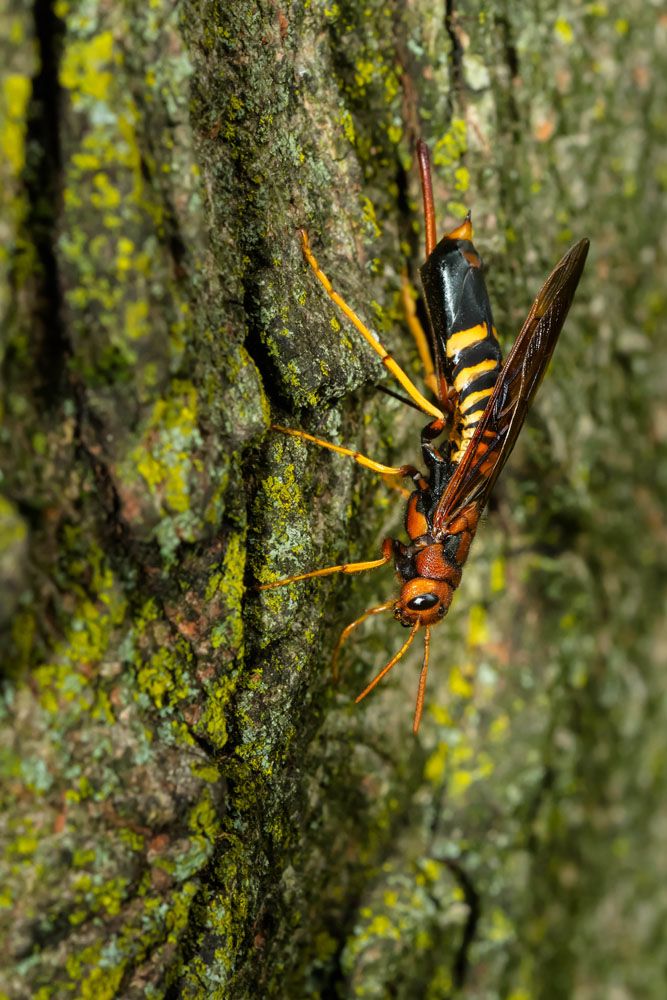
Pigeon Tremex – Tremex columba
Pigeon Tremex (Tremex Columba)
Latin Name: Tremex Columba Linnaeus
Common Name: Pigeon Tremex
Appearance:
- The adult wasp has a straight-sided cylindrical reddish-brown body with a yellow-banded and black pattern on the abdomen and is 1 to 1-1/2 inches long.
- The wings are dark brown to black. Both sexes have projections called “horntails on the end of the abdomen.” Females also have a longer protrusion called an ovipositor that emerges from the underside of the abdomen and is used to deposit eggs in tree trunks.
- Wood wasps are also known as Siricidae. Adults can be mistaken for sawflies.
